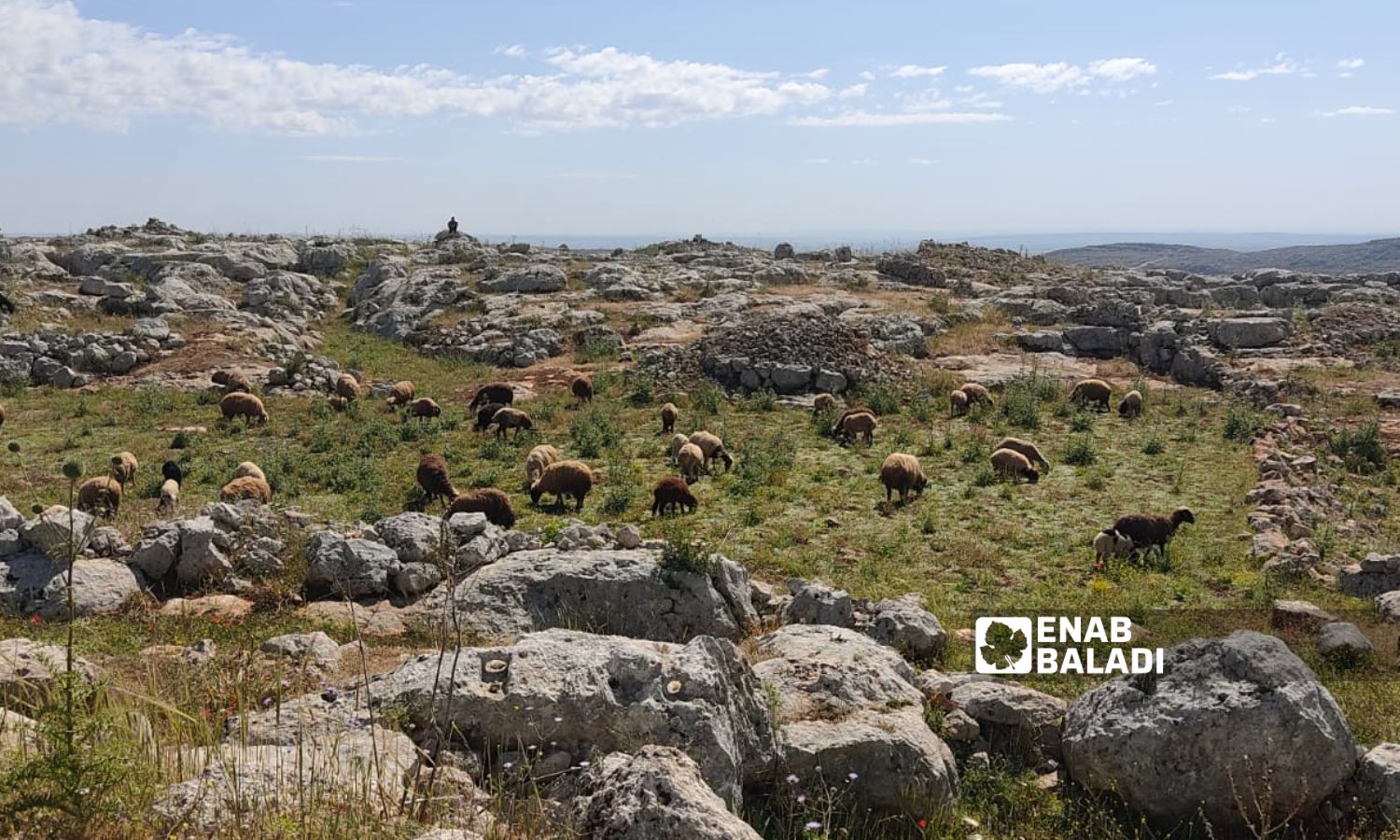



Enab Baladi – correspondents
The rains revived the agricultural lands after aridity and drought, and after the lack of rain burdened the livestock breeders with the burden of buying fodder due to the lack of pastures and threatened the agricultural crops.
Heavy rains hit agricultural lands with the approaching end of the rainy season, giving farmers hope for an agricultural season that contradicted previous expectations and left an impact on various sectors related to agriculture, especially livestock.
“It came at a critical time when crops and herbs were on the verge of perishing,” said Ghanem al-Durai’, 50, a livestock breeder in the western countryside of Qamishli, about the impact of the rains on farmers and livestock breeders.
He added to Enab Baladi that what distinguishes the rainfall is that it lasted for several days and covered all agricultural lands.
“Free pastures were available, and it eased the burden of paying large amounts of money to buy fodder,” continued the livestock breeder, pointing out that northeastern Syria witnessed a rise in fodder prices due to the increased demand for it after the rains stopped.
After the rains, livestock breeders no longer have the previous fears of fodder shortages and traders controlling their prices, according to al-Durai’.
The situation is not much different in the western countryside of Daraa.
Hussein, 25, told Enab Baladi that after the rains, he no longer has to pay the price of fodder, which has witnessed a continuous increase over the past months.
The price of a kilo of fodder in Daraa exceeded 3,000 Syrian pounds ($1.2), while the price of a kilo of hay reached 1,200 Syrian pounds ($0.48), according to what was monitored by Enab Baladi.
Idlib-based agricultural engineer Ghassan Abboud told Enab Baladi that the rains have positively affected the growth of vegetation cover in general and the pastures in particular, as the rainfalls, which ranged from medium to heavy, contributed to a significant increase in the natural pasture plants in the area.
The availability of pastures in northwestern Syria has limited the necessity of many livestock breeders to abstain from work or sell part of the herd to secure the price of fodder for the rest.
Livestock has witnessed a remarkable improvement following the rains in various regions of Syria, according to what was monitored by Enab Baladi.
The agricultural engineer attributed this improvement to the diversity of the livestock diet between dry and green fodder, which contributed to an increase in the production of milk and its derivatives and the quality of meat.
The impact of the improvement in livestock began to appear in the prices of livestock, which began to rise, especially sheep, according to Abboud.
This improvement affected northeastern Syria, as a livestock breeder in the western countryside of Qamishli, Ghanim al-Durai’, said that the prices of livestock have witnessed a significant increase during the past weeks due to the optimism of the breeders about the availability of fodder.
Al-Durai’ added that the livestock’s access to green and abundant food means an improvement in their health, an increase in their weight, and their milk productivity, which leads to an increase in their price.
The rise in livestock prices resulted in an increase in the price of red meat, prompting the Autonomous Administration in northeastern Syria to stop exporting livestock for a period of five days, starting from February 28.
This came after livestock breeders in various regions of Syria suffered for years from difficult conditions, which prompted some of them to give up the profession or sell livestock to reduce the burden of their expenses.
Warnings and complaints have been repeated over the past years about the impact of the lack of rain on the agricultural sector and livestock in Syria.
Livestock in Syria constitutes about 40% of the total agricultural production and contributes to securing job opportunities for about 20% of the workforce in rural areas, according to a study by the international organization “IMMAP,” published in May 2021.
The percentage of rural families in Syria for which livestock breeding is the main source of food and income has reached an average rate of about 35%.
if you think the article contain wrong information or you have additional details Send Correction